LAB-GROWN DIAMONDS
LAB-GROWN DIAMONDS
Since 1921, Adlers Jewelers has been offering the finest diamonds. Today is no different than 100 years ago. We currently offer the option of Lab Grown Diamonds to our clients as an alternative to Natural Diamonds.
Below, we have created some a basic informational guide to understanding Lab Grown Diamonds. We encourage you to do your research, then when ready schedule an appointment with our Diamond Experts to choose the very best one for your purchase.
WHAT ARE LAB GROWN DIAMONDS?
HOW ARE LAB GROWN DIAMONDS CREATED?
Lab-grown diamonds, scientifically referred to as synthetic diamonds, are a fascinating innovation in the realm of gemology. Unlike their naturally occurring counterparts, lab-grown diamonds are created through controlled processes within a laboratory setting. Two primary methods are employed in their production: high-pressure, high-temperature (HPHT) and chemical vapor deposition (CVD).
In the HPHT method, carbon atoms are subjected to extreme pressure and temperature, replicating the conditions deep within the Earth where natural diamonds form. On the other hand, CVD involves the deposition of carbon atoms onto a substrate, resulting in the gradual growth of a diamond crystal. These methods meticulously mimic the geological processes that take millions of years in nature, allowing for the creation of diamonds with identical physical, chemical, and optical characteristics.
There are two main processes used to create laboratory-grown diamonds:
High
Pressure, High Temperature (HPHT)
With
this method, laboratory-grown diamonds are produced using
high-pressure, high-temperature conditions similar to what natural
diamonds experience in the earth. HPHT diamond growth occurs at
pressures of 5–6 GPa (roughly equivalent to the pressure exerted by
a commercial jet airplane if balanced on the tip of a person’s
finger) and at temperatures of 1300–1600°C.
Chemical
Vapor Deposition (CVD)
This
technique enables scientists to grow laboratory-grown diamonds using
moderate temperatures (700°C to 1300°C) and lower pressures.
Carbon-containing gas is pumped into a vacuum chamber and deposits
onto a diamond seed, crystallizing as laboratory-grown diamond. The
eventual size of the diamond depends on the time allowed for growth.
The rough diamond undergoes additional processes such as cutting and polishing to enhance its optical properties and prepare it for use in jewelry.
In both methods, the diamond slowly grows layer by layer over a period of weeks to months, depending on the desired size. The result is a rough diamond that is later cut and polished to enhance its optical properties.
The diamonds then undergoes a thorough grading process, including evaluation of its carat weight, cut, color, and clarity. This assessment is typically performed by gemological laboratories such as the Gemological Institute of America (GIA). The entire process is conducted in a controlled laboratory environment, ensuring that the resulting lab-grown diamonds possess the same physical, chemical, and optical characteristics as natural diamonds.
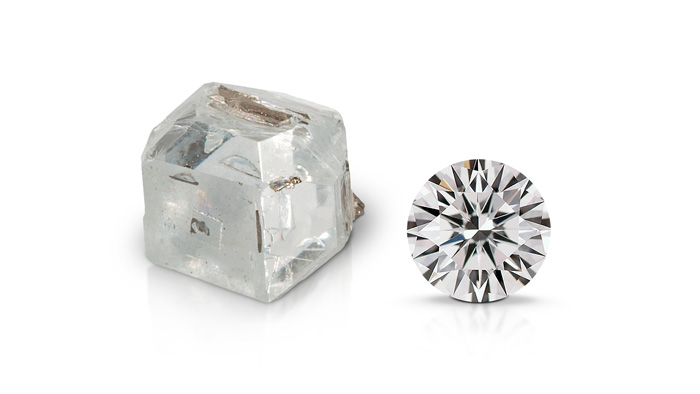
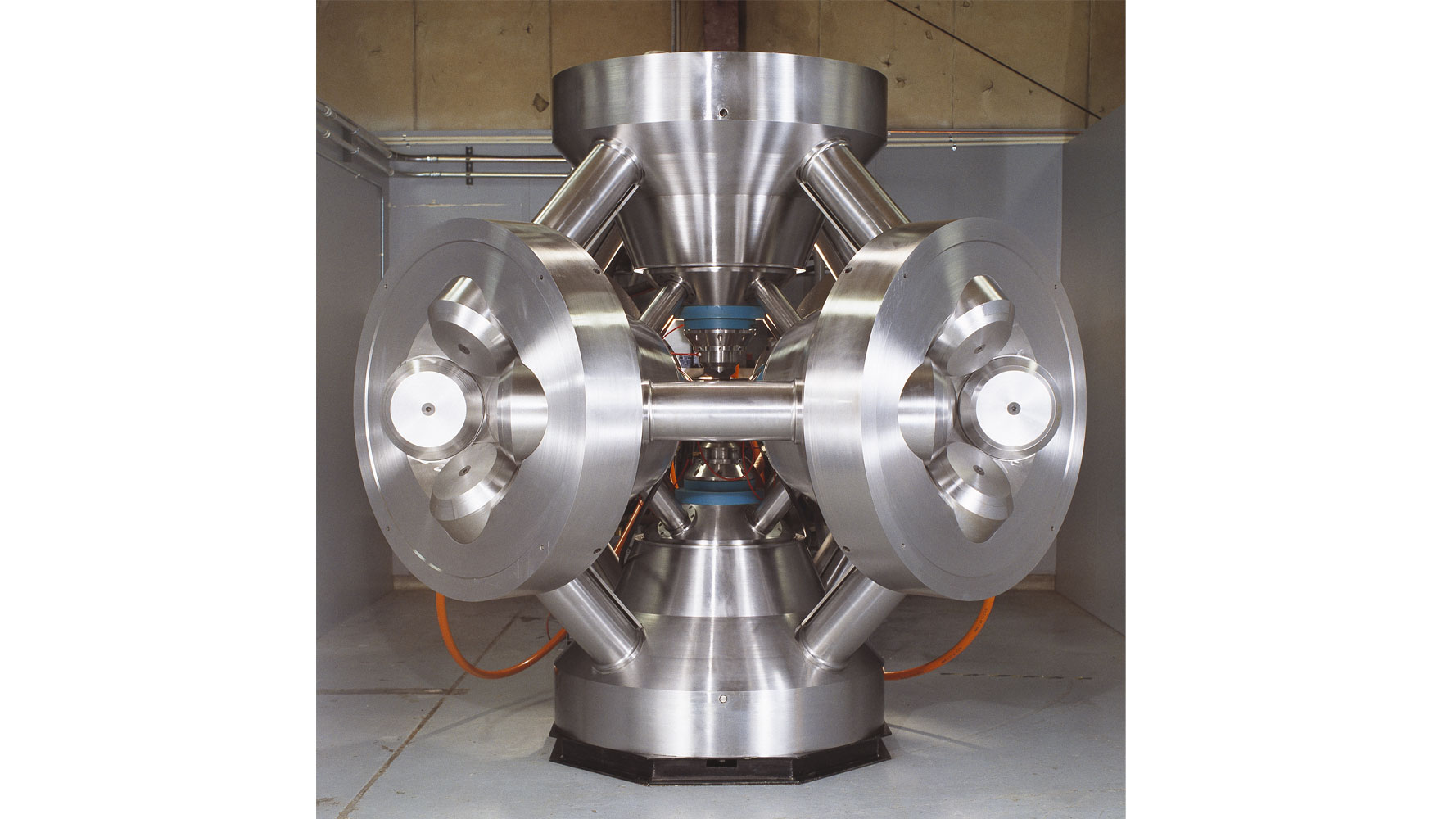
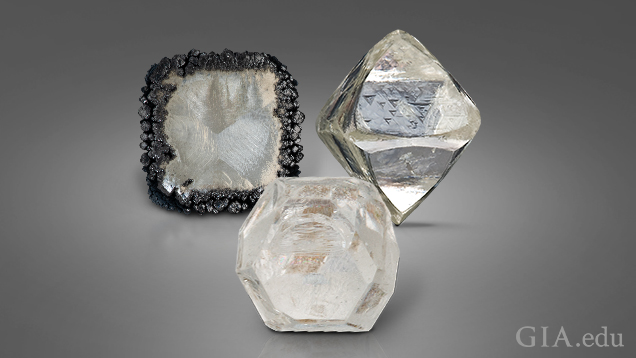
Lab-grown diamonds are graded using the same criteria as natural diamonds, known as the "Four Cs": carat weight, cut, color, and clarity. The Gemological Institute of America (GIA) and other reputable gemological laboratories employ these criteria to assess and classify lab-grown diamonds:
Carat Weight: Carat weight measures the size of the diamond. One carat is equivalent to 0.2 grams. Larger lab-grown diamonds typically command higher prices, assuming all other factors are equal.
Cut: The cut of a diamond refers to its proportions, symmetry, and polish. The quality of the cut directly impacts the diamond's brilliance and sparkle. Well-cut lab-grown diamonds showcase optimal light reflection and refraction.
Color: The color grade assesses the presence of any tint in the diamond. The GIA color scale ranges from D (colorless) to Z (light yellow or brown). Most lab-grown diamonds fall within the colorless to near-colorless range, but some may exhibit fancy colors as well.
Clarity: Clarity evaluates the presence of internal and external flaws, known as inclusions and blemishes, respectively. The GIA clarity scale ranges from Flawless (no imperfections visible under 10x magnification) to Included (imperfections visible to the naked eye). Lab-grown diamonds, like natural diamonds, can vary in clarity.
It's important to note that lab-grown diamonds may also be graded for additional factors such as Polish and Symmetry. The grading process ensures that consumers have access to comprehensive information about the quality and characteristics of the lab-grown diamond they are considering, facilitating informed purchasing decisions.
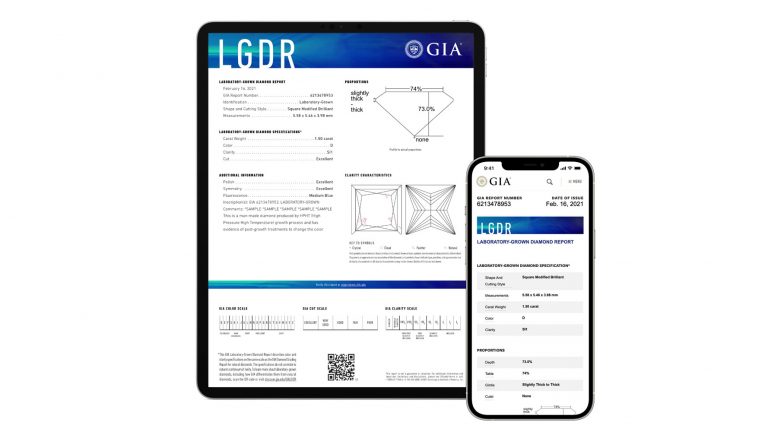
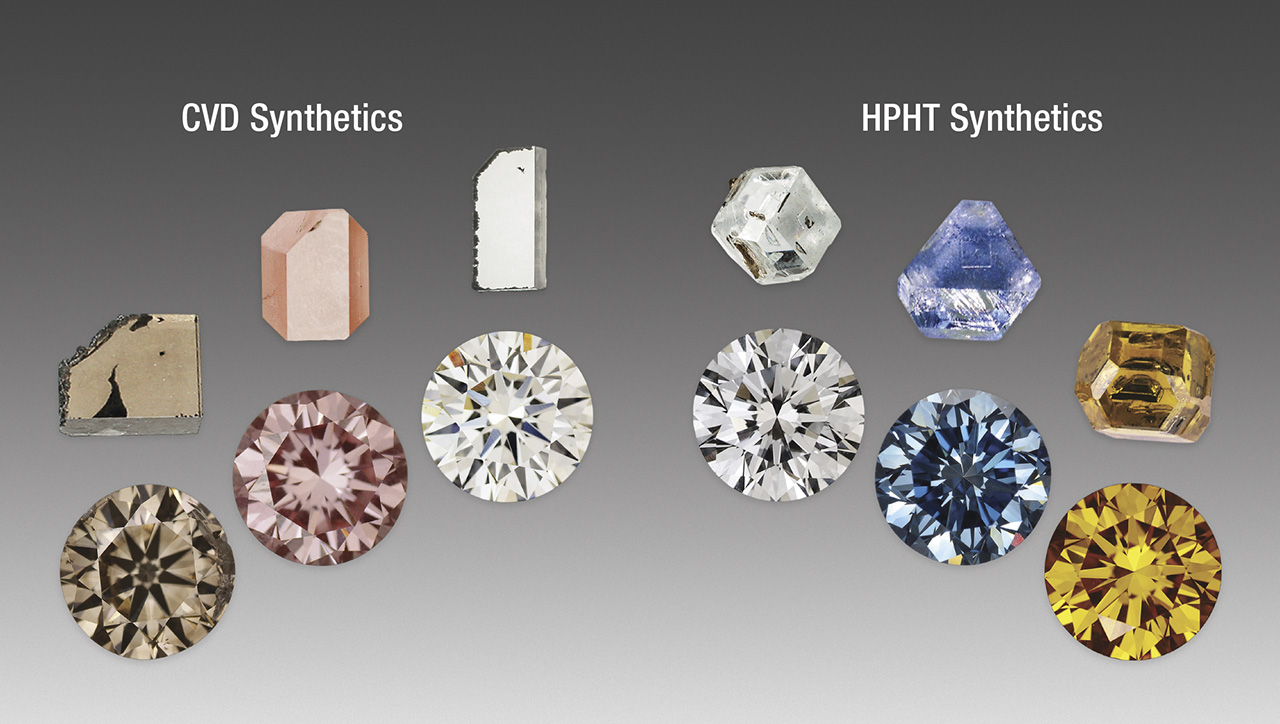
Laboratory-grown diamonds require advanced testing in a gemological laboratory to be identified with certainty. At laboratories like GIA, scientists and graders used sophisticated instruments to analyze diamond strain patterns, trace element composition, inclusions, fluorescence, phosphorescence and more in order to separate laboratory-grown diamonds from natural. These factors are different due to the vastly different formation conditions of laboratory-grown and natural diamonds.



